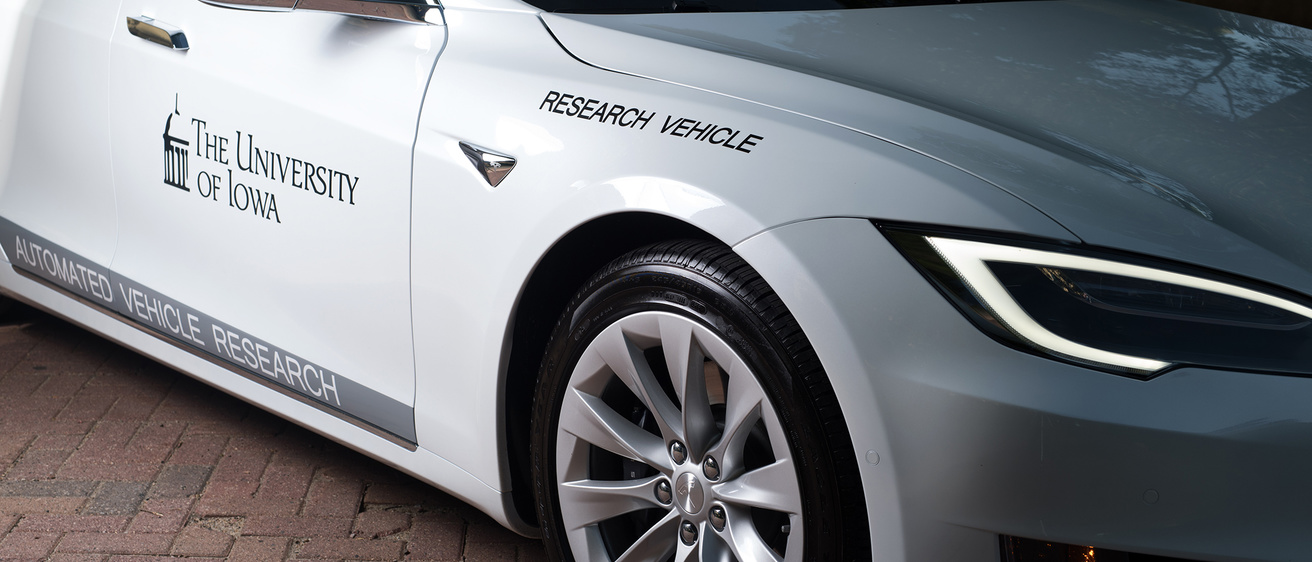If you’ve driven an electric vehicle, you’ve likely used regenerative braking. This feature causes the vehicle to decelerate as soon as the foot is lifted off the accelerator pedal and continues to actively brake if neither pedal is depressed. This essentially turns the motor into a generator and charges the vehicle’s battery.
But is there a safety benefit to this feature? Funded by SAFER-SIM, this is the first study we know of looking at the safety implications of regenerative braking. “You basically get a head start on the braking so that the stopping distance is reduced,” explained Chris Schwarz, PhD, principal investigator.

Schwarz modeled the deceleration of the NADS’ Tesla and replicated that in the NADS-1 simulator. Graduate student Christopher R. M. Rundus designed the experiment and simulator scenario, helped run subjects, and was first author on the paper published in Ergonomics in 2021. Schwarz and Rundus were able to identify and quantify the deceleration advantage—measuring how far the vehicle traveled from the time the foot is lifted off the accelerator pedal to the time the brake pedal is depressed.
“In this first paper, we determined that there is a braking advantage, so now we can dive into how this affects the driver’s braking behavior, which is the goal of my next paper (in progress),” said Rundus.
Since the vehicle actively decelerates when neither pedal is depressed, they hypothesized that this would result in a difference in driver foot behavior. They did find a notable difference in foot behavior after the accelerator pedal is released until the brake is pressed. They also found drivers engaging more often in foot behavior indicating uncertainty—i.e., a greater prevalence of the foot moving back and forth, or “wagging foot.”
